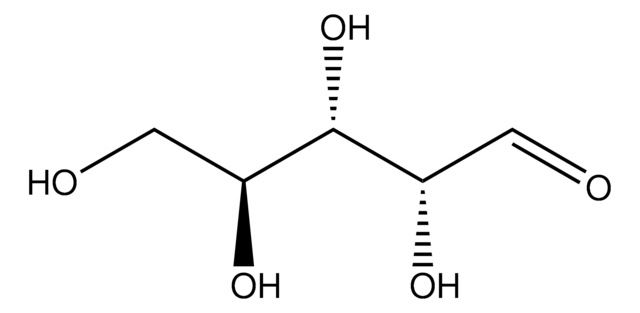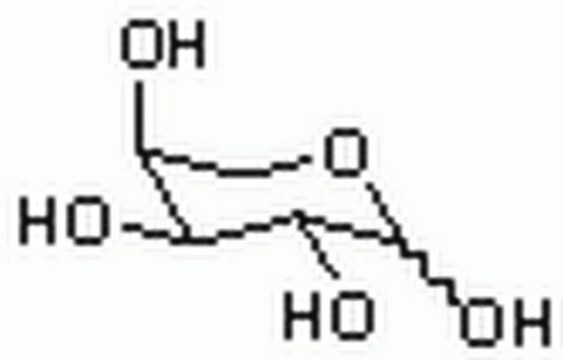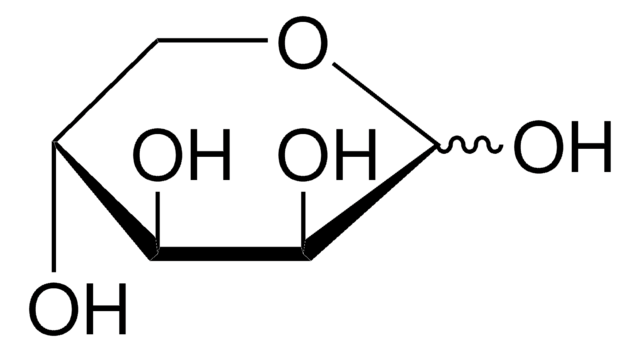A3256
L-(+)-Arabinose
≥99% (GC)
Synonym(s):
(+)-Arabinose
About This Item
Recommended Products
Quality Level
Assay
≥99% (GC)
form
powder
optical activity
[α]/D +103 to +105°°(lit.)
technique(s)
flow cytometry: suitable
gas chromatography (GC): suitable
ion chromatography: suitable
microbiological culture: suitable
color
white to off-white
mp
160-163 °C (lit.)
solubility
water: 100 mg/mL, clear, colorless
suitability
suitable for determination of protein concentration
suitable for microtiter plates
application(s)
genomic analysis
life science and biopharma
microbiology
SMILES string
OC[C@H](O)[C@H](O)[C@@H](O)C=O
InChI
1S/C5H10O5/c6-1-3(8)5(10)4(9)2-7/h1,3-5,7-10H,2H2/t3-,4-,5+/m0/s1
InChI key
PYMYPHUHKUWMLA-VAYJURFESA-N
Looking for similar products? Visit Product Comparison Guide
General description
Application
- to induce and regulate the expression of specific genes or proteins in bacterial strains
Biochem/physiol Actions
Features and Benefits
- Suitable for biochemical and cell culture research
- Versatile and adaptable for wide variety of laboratory and research applications
Other Notes
comparable product
Storage Class Code
11 - Combustible Solids
WGK
WGK 3
Flash Point(F)
Not applicable
Flash Point(C)
Not applicable
Personal Protective Equipment
Certificates of Analysis (COA)
Search for Certificates of Analysis (COA) by entering the products Lot/Batch Number. Lot and Batch Numbers can be found on a product’s label following the words ‘Lot’ or ‘Batch’.
Already Own This Product?
Find documentation for the products that you have recently purchased in the Document Library.
Customers Also Viewed
Our team of scientists has experience in all areas of research including Life Science, Material Science, Chemical Synthesis, Chromatography, Analytical and many others.
Contact Technical Service








